|

CHAPTER ONE HUNDRED NINETY
TWO:
WAR ZONE
Written by
Rick Archer
|
|
SUBCHAPTER 833 - COUNTRY'S COOL, DISCO
SUCKS
|
Rick
Archer's Note:
This is the true
story of the strangest Civil War you will ever read about.
No blood was shed, no arms were broken, but the battle was
fierce nonetheless. The battle took place on Houston's
Country-Western Dance Floors in the summer of 1980.
The cause of the war was Urban
Cowboy. This movie made quite an impact on Houston, but it was
not necessarily for the better. Anyone who visited a
C&W dance club following the movie's premiere would have
witnessed something akin to pandemonium.
On one side were
the Disco dancers. That was my team. On the
other side were the Country Dancers. Thanks to
Urban Cowboy, they were the new administration.
Disco had just gone down in flames thanks to the Disco
traitor known as John Travolta. Now that the Dancing
Cowboy had singlehandedly eliminated every Disco club in
Houston, it was the Cowboys' turn to gloat. "Ha ha ha,
those stupid Disco Dancers are being forced to visit Western
citadels for the first time in their lives." The
Cowboys licked their lips with anticipation. Welcome
to your first Rodeo, City Boys!
Gee, I could
hardly wait. Having just seen Urban
Cowboy for the first time, I disliked the movie for two reasons. One, the dancing was
mediocre. Two, the premise was complete
nonsense. The movie suggested Cowboys and Urbans, i.e.
city folk, were
willing to cross class lines to blend two cultures
into one happy Utopia.
For example, Travolta's 'Bud'
character moved
fluidly from Gilley's to Úlan,
Houston's answer to Studio 54.
In real life,
no way. Bud could not afford the expensive private
membership. He would have failed the dress
code. But most of all, no
self-respecting Gilley's regular would dream
of going to a Disco. This group hated the music and
disliked the people who danced to it.
|
 |
The movie was
correct that many
country boys had moved to Pasadena and Houston in search of
jobs. The movie was also correct that they preferred
to stick to their roots. They avoided the Discos like
the plague. As for most Houstonians, they felt a
similar distaste for Gilley's and the
Winchester Club. Neither the Urbans nor
the Cowboys had the slightest desire to
visit the other's
stronghold.
Both groups were perfectly
contest to leave things just
the way they were.
Unfortunately Urban Cowboy
managed to
create ample bitterness on both sides.
The uproar caused by the movie on Houston's dance floors
makes for a very interesting story.
Back in 1979, the movie's
influence forced
the Houston Discos to close and reopen as Country.
As Houston's best known Disco teacher, obviously I was
bitter at seeing Disco
eliminated. I also had lots of company. Where were the
displaced Disco dancers supposed to go?
If the Disco people
wished to continue dancing, we had no choice but to
visit a C&W club. Uh oh. Once we
began to visit, the sparks
began to fly!
The
Cowboys were bitter too. They
were Country when Country Wasn't Cool. They
felt invaded and violated by Disco dancers flooding
their floors. But what about
the displaced Disco dancers? Trust me, the
Disco crowd was just as bitter. No one understood why
this boring style of dancing had been arbitrarily imposed
upon us. No one likes to
have something forced on them, especially without apparent
justification.
I was
reminded of busing back in the Sixties. The busing policy
forced blacks and
whites to mix against their will, a
surefire recipe for conflict. Urban Cowboy
created a similar problem here in Houston, although hardly to the same extent.
That said, there was some real animosity. Urban Cowboy turned Houston's
C&W dance floors into a War Zone for a while there.
After making fun of Disco for
two years, 1978-1979, the Cowboys were appalled to see the 'Disco Sucks'
people enter their clubs in 1980. The Cowboys were
hardly
in a welcoming mood. These clubs belonged to them! They
made sure their hostility was apparent by pushing, shoving,
insulting, frowning, sometimes even going so far as to throw a
punch. Well, I am sorry if the
Disco crowd upset the Kickers, but I guarantee
the Disco
crowd would never have dreamed of going to a kicker club
if their preferred form of dancing had not been forcibly taken away.
The
Disco people considered Western dancing a form of 'slumming'.
"No way
I'm going to a dirty joint like Gilley's!'"
|

 |
Fortunately, this revulsion was anticipated
by McFaddin-Kendrick which is why they created clubs like
Rodeo and Cowboy well in advance of the movie
debut.
I always wondered which genius had the foresight to create the exquisite
Cowboy, a country palace quite acceptable to Disco snobs. By the way, don't ask me what the
Real Cowboys thought about Cowboy. It wasn't
printable. Let's just say in their opinion Cowboy sucked
almost as much as Disco did. Cowboy was
considered the domain of the Fake Cowboys.
Although the movie
suggested Pasadena kickers like Bud visited upscale discos like
Úlan with the greatest of ease, this
was a figment of the writer's imagination. I don't recall any
mass invasion of the Houston Discos by the Country crowd.
On
the contrary, Kickers hated Disco
music with a passion!! Why bother wasting a night on a Disco
visit when they could be out fighting in
some bar over in Pasadena?
To me, the tension was rooted in class distinctions.
As the stereotype went, Disco was the
preferred music of
educated, elite Houston professionals
while Country
music was embraced by the less educated working class
of Pasadena.
It was white collar versus blue
collar.
Observing the
initial Houston area box-office returns were surprisingly low, a Houston
newspaper took a poll one month after the Urban Cowboy premiere.
The newspaper was trying to figure out
why local Houston and Pasadena teenagers were not flocking
to see the film. The major complaint from the kids
was they did not have a clue what the word 'Urban'
meant. When that inflammatory statement appeared in
the paper, the smug Disco crowd felt vindicated. What
a bunch of hicks! Did they ever think of looking in a
Hick-tionary? Oh, too bad, they didn't own one, did
they?
|
Personally, I
thought the hiring of John
Travolta was to blame. He was a polarizing figure from the start.
Travolta was
seen by country folk as Disco disguised as Country.
He was a Fake Cowboy attempting to cash in. His movie
was a money grab.
Houston's cultural rift
began when filming commenced in the spring of 1979.
Newspaper and TV reporters simply could not get over the fact that
John Travolta, the hottest actor on the planet, was
filming a movie nearby. But get
this... Travolta refused to live in Pasadena. Instead
he found a Houston mansion to rent. Travolta claimed
to love being a Cowboy, but everyone knew who's side he was
really on.
The
Houston reporters were locked in perpetual tizzy.
For weeks on end, I could not open the morning paper without
some breathless reference to
'John' in the Gossip Column.
Nor did it stop with the
newspapers.
Nary an evening
went by without
some breathless mention
of a Travolta
sighting on each TV channel. Travolta
was worse than Waldo... he was everywhere! But what
people failed to realize was that all this hype was
being spat upon by Houston area Cowboys. They hated him!
Although
national box office benefitted greatly from Travolta's
appearance, local box office would have done much better if
Patrick Swayze had played the lead. Many True Blue
Cowboys boycotted the movie strictly due to Travolta's presence.
Indeed,
local
Kickers
directed all kinds of disgust at 'Ravolta',
the
pretty boy
symbol of the
hated
Disco crowd. The very thought that
smug, conceited
John Ravolta, the Disco King himself, had been chosen
to play the role of the Dancing
Cowboy made country people
sick to their stomach.
|
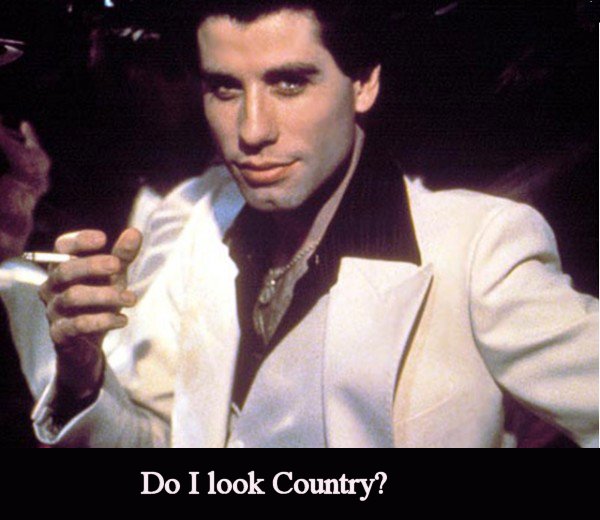 |
Prior to John,
Houston and Pasadena got along just fine. Let sleeping
dogs lie. Throughout the Seventies, Gilley's
wasn't bothering anyone in Houston. Now thanks to
John, there was intense curiosity about the movie
being filmed in neighboring Pasadena. First
the first time,
Houstonians paid
attention to Gilley's.
Starting
when the movie was being filmed in
mid-1979, many
Houstonians made the necessary pilgrimage to
Gilley's to see what the fuss was
all about.
This was the
first-ever visit for most
Houston people.
They all came back shaking their heads in disgust.
They could not
believe what they had seen! Gilley's was
hand's down the ugliest, filthiest place they had ever visited
in their life. Nor did it help that the
beer-belching regulars were gross and hostile. My friends were confused.
No one
could understand what the big to-do was about. Why
are they making a movie about this ugly redneck citadel?
No argument from
me. I was just as confused as
everyone else.
After I
accompanied
my friend Joanne to her beloved Cactus Club,
I ran from the place screaming. My trip
to Gilley's left me equally depressed. I
spent all of 1979
wondering who on earth decided Western dancing at Gilley's would make a nice Sequel
to Saturday Night Fever. Now that
I had actually seen Gilley's, the idea
was even more preposterous. Seeing the movie was even
more painful. This was the worst 'Sequel' I had ever seen!
In my opinion,
the movie was dishonest. Someone had hoodwinked the citizens of Houston. Country
may indeed be Cool, but the only side we were seeing was ugly.
And how do you
suppose the Gilley's patrons felt about
Houstonians thumbing their collective nose at the Pride of
Pasadena? There was a lot of anger on both sides.
And take a guess where that anger manifested itself?
Houston's C&W dance floors.
|
SUBCHAPTER 834 - COLLISION
OF TWO WORLDS
|
By my estimate, Urban Cowboy
created two awkward years of class warfare here in Houston. The movie
suggested that Urbans, college-educated Houston professionals,
and Cowboys, blue
collar Pasadena factory workers, were
ready
to erase class distinctions. Ridiculous.
Instead the movie created the exact opposite situation by bringing
ancient prejudices out in the open. I suppose there has
been underlying hostility and distrust between city
people and
country people dating back to the days of the settlers. If there is any doubt,
go see Deliverance again. In that movie,
the revulsion
city slickers feel for hillbillies is matched stride for
stride by
the hostility country folk feel for smug, uppity, know-it-all city boys.
|
Here in Texas,
for the past century,
country people have been subjected to ridicule as rubes,
hicks and rednecks. Not only do many city people
despise country music, they make fun of country dancing as
well. Give monkeys enough alcohol and watch them hop
around the same way kickers do.
No one likes being made fun of, so
people raised in the country understandably carried a large chip on their shoulder.
Here in the Greater Houston area, the mutual hostility was kept under wraps using
a simple solution... everybody stayed in their own backyard.
However, that was about to change. John Travolta was
coming to town carrying Pandora's Box under his arm.
By closing all
the Houston Discos and turning them into Country dance
halls, the country people suddenly had the upper hand.
Since they had grown up dancing country, in their mind,
Country dance halls were their personal property. You
Disco dancers are not welcome! Go home!
Go home to
where? The Disco dancers had no homes! The 1979
'Western Transformation' of had erased the Disco
playgrounds in Houston. In so doing, the loss of their
habitat unleashed a tremendous amount of underlying
resentment in the Disco circles. Now that all the
Discos had closed, pretty much against their will any Disco
boy and girl who wanted to keep dancing was forced to invade
the Western dance clubs.
|
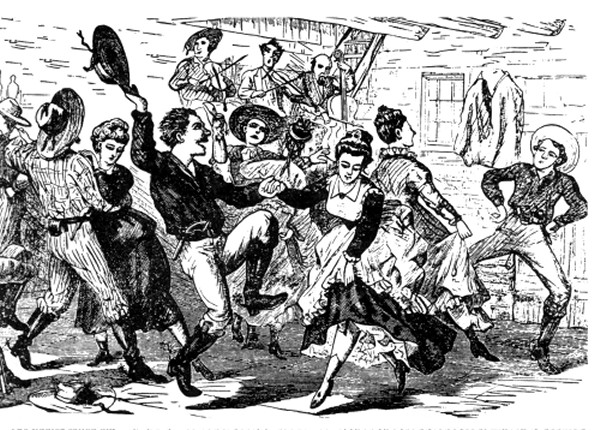 |
A huge C&W
backlash ensued. The Country
crowd delighted in taking revenge on the hated city slickers
who had spent their whole lives making fun of country people.
Acting ugly
towards the 'Disco Sucks' newcomers was justified by
a century of disrespect by the city crowd. However, this
bitterness was hardly a one-way street.
I was bitter and so were my
Disco friends. Urban Cowboy had cost us
our Disco lifestyle. Thanks to Urban Cowboy,
Disco was dead and Country-Western was being shoved down our
throats. Furthermore, the very people the movie had
glorified were behaving like asses. Now we knew why we didn't
like these Gilley's type people to begin with.
Now that the
forced migration had created the Collision of Two Worlds,
Houston would be permanently changed in a very unusual way.
|
SUBCHAPTER 835 - COUNTRY
WHEN COUNTRY WASN'T COOL
|
|
|
I Was Country When Country Wasn't Cool
-- Barbara Mandrell
I remember wearin' straight leg Levis
Flannel shirts Even when they weren't in style
I remember singin' with Roy Rogers
at the movies when the West was really wild
And I was listenin' to the Opry
When all of my friends
were diggin' Rock 'n Roll and Rhythm & Blues
I was Country, when Country wasn't cool
I remember circlin' the drive-in,
pullin' up and turnin' down George Jones
I remember when no one was lookin'
I was puttin' peanuts in my Coke
I took a lot of kiddin'
'Cause I never did fit in
now look at everybody
tryin' to be what I was then
I was Country, when Country wasn't cool
By bringing Cowboys and Urbans into direct contact,
Urban Cowboy had flipped the social order
upside down here in Houston.
This
was a form of 'Forced Integration'.
They didn't
like us and we didn't like them. To me, the prejudice
was apparent from the start. How could I forget the
rudeness that caused Country dancers to knock down my
students Devin and Mona simply because
they were dancing the wrong kind of Waltz at the Winchester
Club? That was my
first clue that things weren't right.
Throughout the summer of 1980, the
centuries-old
'city versus country' tension was played out on C&W dance floors.
Certain misguided people
engaged in silly
turf warfare. One
night some guy called me a 'Stupid Disco Duck'.
He didn't like seeing me dance Disco. Why were these people so
darn mad at us? I began to give serious thought to the
Kicker rally cry 'I was Country before Country was Cool'.
I knew what I was upset about. This damn movie had
killed Disco in Houston two years before it died a natural
death in other parts of the country.
But what exactly
were the country people objecting to?
I identified
five areas of tension... Travolta, Fake Kicker Clubs, Music,
Fashion, and I'll let you guess the fifth. As I
pointed out, the first
argument started with John Travolta. The Houston-area Country Crowd was upset over the
inclusion of Disco John in Western stripes as their unwanted hero.
Then the Real Cowboys got mad because Houston nightclubs created
bastardized copies of Gilley's with fake
Kicker joints like Cowboy. They were
especially angry that Cowboy had the nerve
to play Disco music. The outrage continued to build when Willie
and Waylon were snubbed on
the Urban Cowboy soundtrack. The old-timers
were mad!
This new 'Eagles' sound was interpreted by old-timers
as more suitable for Yuppie newcomers to the scene.
Damn it, the Outlaw Sound was
vaporized against their will and replaced by soothing ballads!
Previously I
discussed how Urban Cowboy producer Irving
Azoff deliberately replaced Old-Style Country Music with
Eagles-style music in an attempt to appeal to a wider
audience. While Azoff was certainly within his rights
to do so, I think this bold move is what gave rise to the "I
was Country when Country wasn't Cool" battle cry.
With
justification, the Real Cowboys felt like Hollywood
was thumbing its nose. They
blamed the Disco crowd for Hollywood's decision to change
the music from 'Real Country' to 'Country
Fake'. Country people detested the Urban Cowboy soundtrack because
traditional music had been ditched in
order to promote rhythms more suited to the tender ears of
'Disco Ducks'.
Country people
held dear to their beliefs. They believed in trucks,
guns, rodeos and country music.
Hank Williams, Merle Haggard, Johnny Cash, Willie and
Waylon were their heroes. Now they were being shoved aside for the Eagles
and other California pop artists.
What the hell is going on here? Some idiot Disco person
must have put
this soundtrack together. Whatever happened to angry
music? Whatever happened to done me wrong songs?
The rapid transition caused a lot of hard feelings and I
could see their point. I was angry when I lost my beloved Disco
music. Now the old-timers were angry because they were
losing their Outlaw music.
Are you starting
the get picture?
Urban Cowboy stirred up a
hornet's nest of trouble. The Discos were angry over the loss of
their lifestyle and the Cowboys were angry over the
corruption of their music and the loss of their dance club privacy.
Is anybody
happy here?
In a manner similar to racial tension, we
didn't know exactly who we were mad at, but we were all
looking for someone to take our frustrations out on.
Due to all this hostility, Houston's Country-Western dance clubs turned
into a War Zone.
|
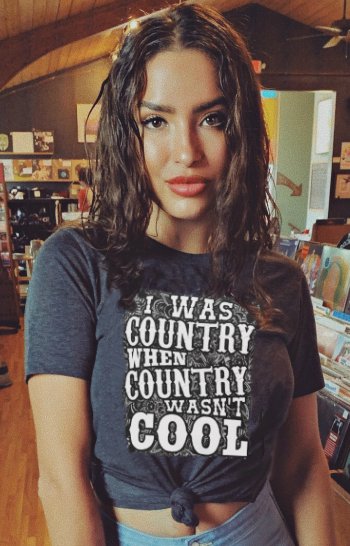
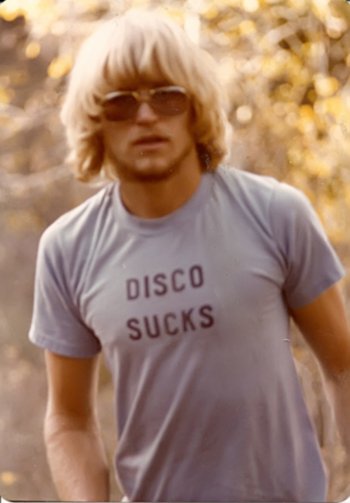
 |
SUBCHAPTER 836 - COUNTRY-WESTERN FASHION
WARS
|
 |
 |
The Real Cowboys
had to deal with another insult, the unexpected arrival of outrageous Western
fashions. With good reason, this strange development rubbed a
lot of people raw.
Although I
hardly consider myself an expert, after years of watching TV shows like Bonanza and
Wagon Train, it was my impression that Western
clothing had not changed much since the days of Roy Rogers
and Dale Evans. Well, those days were over.
Thanks to Urban Cowboy, something crazy was going on.
Tasseled shirts, sequined vests, expensive boots, fancy hats,
turquoise necklaces, matching earrings, spiffy belts, skirts with Navajo
designs. As the Fashion Industry championed these outfits
as the new normal, there were Yuppie women who put
garish over taste. They didn't
just tiptoe across the line with their elitist snobbery,
they demolished it.
I could
definitely
understand why a person raised in the country would feel
disrespected.
These gaudy new fashions were an insult because
they implied country girls were not attractive wearing
the clothes they were comfortable with.
|
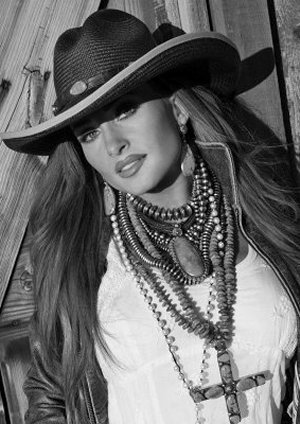 |
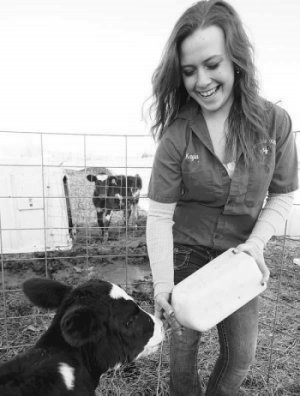 |
Country people
believe in being down to earth. This ethic
includes dressing humble and not worrying about hair,
jewelry and
fingernail polish. Country folk are hard-working people
who wear practical clothing. With good reason, they
asked what exactly was wrong with wearing blue jeans and
denim.
Based on the success of
Saturday Night Fever, once Travolta committed to
the new movie, it probably didn't take much to convince the
fashion people in New York's Garment District to jump on
board.
Saturday Night Fever had been a surprise hit
to everyone involved, but the success of Urban Cowboy
seemed guaranteed. Hyped as the 'Sequel' to the box
office Disco monster, this movie felt like a surefire investment. Consequently the
marketing wheels were set in motion full speed ahead.
The
Urban Cowboy
fashion project
shaped up as a gold
mine certain to pay off in a big way. But it
was also an insult because these new western fashions had nothing to do
with the far less glamorous country people portrayed in the movie.
The Country
people immediately blamed the Disco people for this
abomination. And why was that? Because John
Travolta was being linked to these ridiculous western
clothes. Since we were being told that
Urban Cowboy was a 'Sequel', everybody jumped
to the conclusion that the same people who marketed Disco fashions were trying to make a similar killing on Western
clothes. Disconcerting messages were being sent. This was
a movie about people from the country, but they got a city
boy to play the lead, they used city music, and they
marketed preposterous clothing to city people. Country
folk did not
need a college degree to see the insincerity.
It was increasingly obvious this movie was targeting
City people as its desired audience, not Country people.
Travolta was fake. Cowboy was fake.
The music was fake. And this ridiculous clothing was
fake.
|
The dramatic
change in women's fashion had everyone startled.
Clothes like these had never graced the planet before.
Where had this unusual trend come from? Personally, I
suspected the hidden hand of some Madison Avenue genius.
Someone wizard operating with inside knowledge had orchestrated this
unexpected wave of Western
designs long before anyone knew Urban Cowboy
was in the works.
Speaking
for myself, I liked some of the Western
fashions that popped up in Houston during the Urban
Cowboy Era. On a beautiful woman, these
combinations were very attractive. However, there is a
right place and a wrong place. These alien outfits
were a direct insult to the country crowd, so wearing them
to the Western clubs was certain to invite resentment from
the traditionalists. But that
sentiment was lost on Houston's Fashionistas.
|
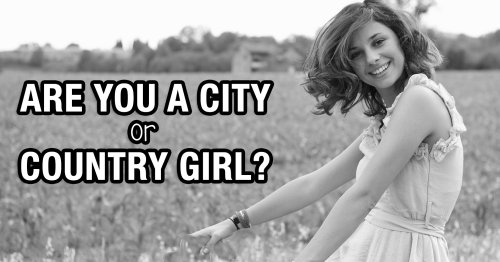 |
The former Disco
Divas decided to cause trouble. Now that Houston's Disco clubs had
been
turned into Western clubs, many displaced Disco dancers were among
those flocking to the Western clubs. Overnight the western dance
floors were visited by droves of former Disco dancers who
had no other place to go if they wanted to keep dancing. Disco Dancing
was known for its outrageous outfits. And yes, the
Divas loved the Night Life. Even better, no one
objected to the crazy clothing.
Western clubs
were different. They had a tradition in place. When in Rome, dress as the Romans
do. That means show respect for how Real Cowgirls dress,
you know, keep it modest. Our Glitter Girls disagreed. They figured if they
could wear anything they wanted to the Disco, they could do
the same thing at the Kicker clubs. And so they did, wearing
outfits more suited for Halloween or Hollywood
than venues which catered to hard working, down to earth people
with dirt under their fingernails and calluses on their
hands.
Truth
be told, only a
few women had the nerve to flaunt their wealth and
so-called social superiority. The majority of Disco women kept it under
control and made a modest adjustment to designer jeans such as Gloria
Vanderbilt. I think the Real Cowgirls could have lived
with this. If the Disco ladies had made an effort to
blend in, there would have been no problem. It was
the gaudy 'Western chic' fashions that got
everyone worked into a tizzy.
The old saying suggests that one bad apple spoils
the barrel. These ridiculous fashion displays gave the Country
people reason to think the Disco crowd was showing disrespect. And
they were right! In my opinion, the decision to wear these
over-the-top Western
outfits to a Kicker club constituted a deliberate act of snobbery.
The word
'pretentious'
doesn't even begin to describe it. Spending fortunes on Western clothing and accessories,
the former Glitter Girls showed up in the Western clubs wearing
outrageous outfits that had nothing to do with milking cows or
dodging mud. To Real Country
people, the clothing issue was all about rich people
making pointless fashion statements at their
expense. The message was that wealthy Disco Urbanites were
acting superior to less affluent, wrong side of the track Country
folk.
In addition to
the disrespect, there was a second problem, maybe even more
insidious. Dare I say that some of the new outfits
looked good on the Disco women? Let me put this
delicately. When done tastefully, some of these modern
outfits looked good, too good. Once the Cowgirls saw
their boyfriends discretely checking out the stylish Disco
women invading their turf, they resented the newcomers even
more. The Real Cowgirls were furious because they were
getting out-spent by good-looking, well-dressed women. No one likes to be shown up, especially in their own
backyard.
Any woman who
entered a club wearing flashy western fashion attire
inevitably stirred up a hornet's nest of anger. This was Class
Warfare! Who let these vermin in?? The Cowgirls did not appreciate being shoved
in a corner by uppity outsiders from the privileged side of the
tracks. They were pissed off and made damn sure
their men knew about it. These Disco frauds need to be put
their place!!
Now the Cowboys were angry because their girlfriends were driving them crazy. Nothing...
I repeat... NOTHING irritated the Real Cowboys more
than the thought that Disco people were trying to show them
up. This whole thing had a rotten Disco smell about
it.
The final insult was the unnecessary fashion invasion which
favored the Disco women. Country people felt these
rich bitches were deliberately thumbing their noses. Where do these uppity Disco people get their nerve?
A trip to the Western clubs during the Summer of 1980 was
fascinating for all kinds of reasons. I could see the
Real Cowboys were seriously offended by the drastic changes
and I didn't blame them one bit. The change
in music and this fashion makeover
were obviously deliberate. Someone on Madison
Avenue was
dictating what country people should listen to and how they
should dress.
Even though I was new to the Western scene, I could tell Urban
Cowboy had changed the landscape forever. So there you
have it. The Real Cowboys were pissed off over Travolta, the disappearance of their Outlaw Music, the
invasion of the Disco crowd, and the rude women with their lavish outfits.
And, believe it or not, another humiliation was on its way.
The Texas Aggies were taking over!!
|

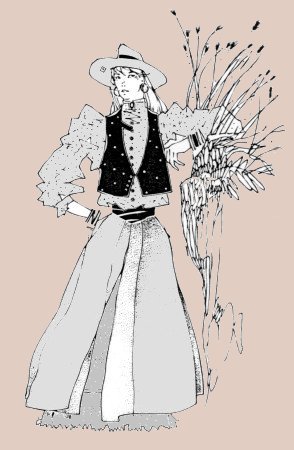 |
SUBCHAPTER 837 - THE
AGGIES STEAL THE SHOW
|
 |
Following the Urban Cowboy
premiere in June, there a lot of people who
consistently
bumped into each other on Houston dance floors.
There were the Real Cowboy old-timers who had
learned to dance in the
country. There were Real
Cowboys who grew up in the city and had never
danced country in their life. There were
Disco dancers and there were the City Slickers who
had
never danced country in their life. This
group included professionals such as doctors, lawyers,
and businessmen.
And
then there were the Texas Aggies.
They were far
and away the
best dancers. And nobody liked
them. That said, they played a key role in
our story.
|
Here in Texas,
the Aggies of Texas A&M and the University of Texas Longhorns
had been bitter rivals for generations.
The University of Texas invited preppies,
high school valedictorians and well-off suburban kids to their campus. A&M was the destination of choice for veterinarians
and Future Farmers of America. But that simplifies things too much. Texas A&M
also provided a
terrific education in many fields such as architecture,
engineering and petroleum exploration.
The Aggies
irritated many country people because they were they were
'trained' farmers with a fancy education. The Aggies irritated many city people because
they were just as good at their white collar jobs as the
rest. But here is the rub. Although A&M
graduates had just as good an education as everyone else, for
some reason they had been chosen as objects for state-wide
derision and disrespect. And what reason was that?
Many people point fingers at the University of Texas.
By and large the Longhorns had the
Old Money and wanted to keep the country boys in their place.
Whatever the motives, these two institutions stood as enduring
state-wide
symbols of country versus city. And guess what?
They didn't like each other.
Many blame the Longhorns for
popularizing the Aggie Joke as a way
to put down their hated rivals. How did
the Aggie freshman die from drinking
milk? The cow fell on him. Two Aggie football players were walking in the woods. One of them said, "Look, a dead bird." The other looked up in the sky and said, "Where?"
In general,
attitudes towards A&M have
improved over the years. However, back in the 70's and early
80's, the Texas Aggies were definitely unpopular. For
some strange reason, graduates of other Texas colleges
seemed to side with the Longhorns. The Aggies had no
allies. At the heart of the problem, they were part-city, part-country. Since the Aggies straddled two
worlds, they were often caught in the middle.
Blue collar city people and less privileged country folk disliked
the Aggies because they were educated, wealthy, and
perceived to act like they were better. The Yuppie crowd disliked the
Aggies because,
well, uh, they
came from the country and still had dirt under their
untrimmed
fingernails.
It did not matter that Aggies
were just as educated and just as smart as the Longhorns.
There must be something wrong with them. Sorry to say,
but there are some people who always
need someone to hate. If it isn't the Jews, Arabs or
Asians, let's try the Blacks, Mexicans, and the poor.
In the eyes of narrow-minded bigots, the Aggies would always be second class citizens because they came from
the country. As if that made a bit of sense.
Unenlightened prejudice is very difficult to understand or
tolerate.
As Mark Twain
once said about bigotry, people are easily fooled into
believing certain things, but it takes an Act of God to help
them realize they had been fooled in the first place.
People's minds tend to be a one-way street. Once an
attitude gets stuck in someone's mind, even it is wrong, it is very difficult
to persuade a person to challenge those thoughts.
After a century
of being besieged by Aggie Jokes and thinly-disguised
hostility, many A&M graduates understandably felt bitter. It is human nature to crave respect
and it also human
nature to fight back when that respect is denied. I
imagine over time many Aggies developed a touchy, defensive
attitude that called for them to lash out. By
overreacting in certain situations, the Aggies inadvertently
served to reinforce the negative attitude held by many.
Over
time, the Aggie stereotype as the Country Bumpkin became
difficult for A&M graduates to dispel.
There are those who claimed the Aggies brought it on
themselves because they had a
chip on their shoulder. Maybe so, but if people had
shown them the respect they deserved in the first place, the
problem would have never developed. During the
Urban Cowboy era, I
think there were times when the Aggies felt like the only
people who accepted them were fellow Aggies. This
explains why they tended to stick to themselves. So
naturally everyone accused them of being aloof and elitist.
Sometimes you just can't win.
|
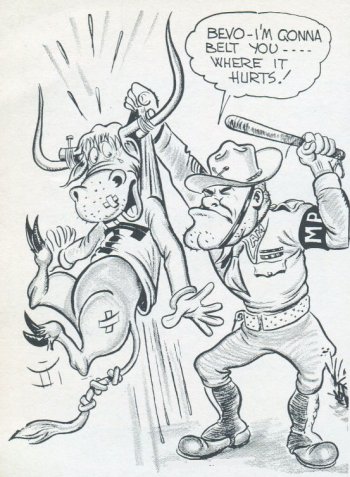
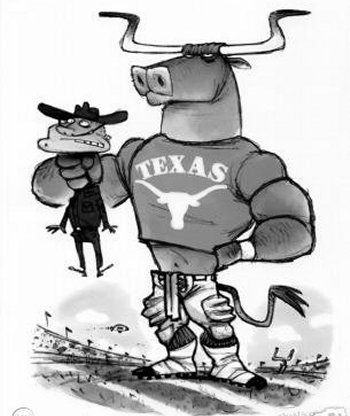 |
 |
For purposes of
our story, it is important to understand that Texas A&M has
long possessed a rich country dance tradition. Even
before I saw the Aggies dominate the Urban Cowboy dance
floors, I had two experiences which confirmed Texas
A&M was a hotbed of dancing.
Back
in March 1978, I was struggling to learn how to
partner dance to Disco music. I had never
partner danced in my life and I had no teacher
to show me the ropes. Hanging out at the
Pistachio Club one night, a pretty
Aggie coed named Janie recognized me from a Disco class she had attended. Janie
had a non-dancer boyfriend named Alex who lived
in Houston. Janie had learned to dance up
at A&M and really wanted Alex to catch
on so they could go dancing together. On a
visit to Houston, Janie had come to my class to
see what he was learning. She liked my
class and encouraged Alex to
stick with it. As it turned out, Alex did
stay with the lessons. In fact, Janie was
waiting for Alex to show up when she noticed me
over at the railing as I watched people dance.
Hoping to get a dance,
Janie came over to strike up a conversation. Noticing my intense concentration
on a couple who was partner dancing, Janie
asked, "Do you like to partner dance?"
With a
rueful smile, I confessed. "I am not much of a partner
dancer, Janie. I know one lousy step and that's it."
Janie
laughed. "Well, at least you know something. Show me your move!"
So I
picked up her hands and led my go-to move, something I called the Pistachio Step.
Janie
squealed with delight. "Hey, I know that move! That's the
Aggie Jitterbug!"
Curious, I asked Janie to show me what she was
talking about. Janie
took me in a corner and ran me through the four
most important moves in the Aggie Jitterbug.
I was beyond grateful. Thanks to Janie, I patterned my
Disco partner dance system after her Aggie Jitterbug
moves.
When I say Janie and her Aggie Jitterbug saved
my dance career, I am completely serious.
Two
years later, lightning struck again when an
A&M graduate taught my friend Joanne how the Texas
Twostep worked. In so doing, he whispered
the Four Magic Words, Slow Slow Quick
Quick. Grateful for the
explanation, Joanne asked the young man
how he had learned to dance so well.
With
obvious pride, the young man replied, "I'm a
member of the Aggie Wranglers. That's a
dance organization we have up at A&M. We
make up all sorts of country moves and teach
classes to new students. We get a lot of
students from the Houston area who have never
danced in their lives. We teach the
newcomers how to country dance so they can
participate in our school dances. You
would be surprised at popular our dances are.
That's how I meet all my girlfriends!"
As
one can gather, I will always be in great debt to Texas
A&M because the school's dance tradition
came to my rescue twice. Forced to learn
Disco Partner Dancing and Country-Western
Partner Dancing using the Braille method, these breakthroughs
allowed me to overcome difficult obstacles.
Thank you, Texas
A&M.
|
It is my
observation that Western dancing in Houston developed in
four phases. Phase I was the Old-Style dancing which
had been around since the days of saloons and barn dancing. Phase II was an offshoot of the disruption caused by the
filming of
Urban Cowboy.
To illustrate my
point, let me share an odd story. Nancy was one of the
girls in the TGIS Seekers Club I had my
eye on before Victoria's reemergence ruined everything.
Nancy probably had her eye on me too. During the group trip
to Gilley's in May, we danced together.
Afterwards Nancy asked me for a favor. Her parents
wanted her to attend an event down in Cuero, Texas, her
hometown. Apparently a family member was being honored
for some reason.
"Rick, a lot
of my friends from high school are going to be at that
dance with their families. I really want to show
off these dance moves you have taught us. Would
you mind going down there with me? It's not that
far. We can drive back the same night."
Ordinarily I
would have said no, but I was interested in this young lady.
And I was lonely. Nor did I have a thing to do on
this coming Saturday night. Since Victoria rarely
checked on me, I figured why not. So we drove to
Cuero. Cuero is a small rural community located roughly
halfway between Houston and San Antonio. I met Nancy's
parents and her brother Jeff at the local VFW Legion hall.
I figure there were a couple
hundred people at the event. After dinner and a
ceremony of some sort, the band took the stage and began to
play a fast Polka. The idea behind the fast Polka was to
discourage anyone from dancing while the band warmed up.
Nancy grabbed
me. This was her big chance to show off before
everyone else got out there. "C'mon, Rick, let's show
them what we can do!"
I did my best.
I circled turned Nancy one way, I circled turned her the
other way, I did Zigzags, Sweetheart Promenades,
Conversations, Side Travel, everything I knew. Then
for the big finale, I did continuous Circle Turns in a giant
circle all the way around the dance floor, 20 revolutions in
a row. It was a fast Polka and most people would get
dizzy, but not us. Nancy's long hair was flying in the
wind and her short dress elevated to reveal her lovely legs.
As we passed her friends, Nancy smiled and waved to her
friends. They waved back. We were good,
very good.
|
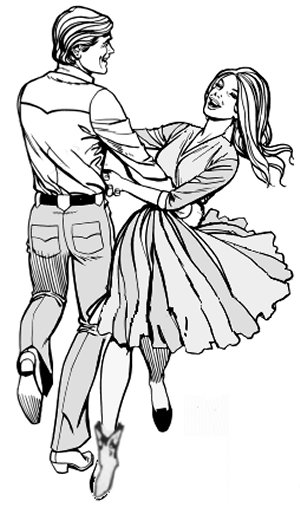 |
As I
walked Nancy back to our table, I noticed the entire room
was frowning at us. Their arms were crossed, their
expressions were hostile, and they
stared darts at us as they whispered to each other.
Some of them looked ready to spit if we passed close enough.
"Good grief," I
thought to myself, "what is this all about?"
After we sat down, people continued to stare at us.
One man even pointed at me. That's when I knew for
sure I had done something wrong, but what? Confused, I
turned to Jeff, Nancy's brother.
"Jeff, these
people look really upset about something. What did I
do wrong?"
Jeff said
nothing. He looked around the room and studied the
faces. After a pause, he nodded a bit. Speaking
in his deep southern drawl, Jeff replied, "Well, Rick, it's
like this. These men have been pushing their wives
backwards in this neck of the woods for the past hundred
years. Now you come in here with all this bullshit
city dancing. I don't think the men appreciate that
very much. That puts bad ideas in their women's
heads about the way things oughta be on the dance floor.
Our men like their
dancing just the way it is."
Then Jeff stared
at me for a moment. This emphasis suggested Jeff
didn't approve either. Not only that, he was giving me
a warning to watch my step. I got the message.
For the rest of the night, Nancy danced backwards. She
danced backwards to Polka. She danced backwards to
Twostep. She danced backwards to Waltz. And she
wasn't very happy about it. In fact, Nancy protested
rather strongly.
"Rick, why
aren't you turning me or letting me go forwards? This going backwards is
really boring! What's wrong with you? Do
some of your fancy moves!"
I explained what
her brother had said to me, but Nancy disagreed. "Oh,
bullshit, Jeff doesn't know what he's talking about.
My girlfriends like it, didn't you see them waving at us as
we danced? Come on, let's do those circle
turns again. That was fun!"
I frowned.
This woman was trying to get me killed.
"Nancy, do you
mind easing up? I'm just trying to get out of here
without a couple of yahoos taking me out back and punching
me in the stomach."
"Oh, for
crying out loud, don't be such a sissy. Stop being
so intimidated and show everyone what we can do."
I didn't
appreciate Nancy's comments one bit. When she repeated
them later on, I said it was time to go. Based on the looks on those men's
faces, I did the right thing.
Basically, that was the night the Old-Style Western
dancing met the New-Style Western dancing. The
hostility I experienced was the perfect example of some of
the anger brought on by Urban
Cowboy in the year prior to its debut. There
are a lot of people in this world who do not like change.
|
SUBCHAPTER 839 - THE
OPENING OF COWBOY
|
Phase Two began in February 1979 when Cowboy opened in Houston. This
unusual club was an expensive experiment to see if
Houston professionals could be enticed to try
Country-Western dancing. Situated in the Galleria, no one had ever heard of
putting an attractive Western club in the high rent part of
town. Plus the owners knew damn well Houston
professionals had no idea how to Western dance. It was
a high-stakes gamble.
The results were a mixed bag.
Yes, Houston area professionals were very drawn to this new
style of music and the plush surroundings. Wealthy,
successful business executives flocked to the place to chase
well-heeled, attractive professional women looking to meet
their male counterparts. In a flash, Cowboy
became Úlan with boots on which was the idea
all along. Cowboy was
popular right from the start with Houston's affluent
singles.
However there
was one very curious development. While the Longhorns
sat at the bar plying desirable women with drinks and witty
lines in
pursuit of affection, the Aggies took their women out on the
dance floor. The Longhorns stared in consternation.
What on earth is going on here?? Look at all the
attention these damn Aggies are getting!
Like any
underdog, the Aggies had long yearned for the chance to
prove they were just as good as anyone else. Seemingly
out of nowhere, the Aggies had just gotten the break they
hoped for. They were the only professionals who had
the slightest idea how to dance to this music. The
world had just turned upside down. The Longhorns were forced to
twiddle their thumbs while the Aggies enjoyed their Day in the Sun.
The A&M graduates had found a place where they could really
shine... the dance floors. Starting with the opening
of Cowboy, Houston area A&M graduates
dominated the western floors for an entire year. In so
doing, their Phase II innovations created the New Style. And
did they garner the respect they craved? Probably to
some extent, but they were also resented for their obvious
superiority. Sometimes you just can't win.
|
 |
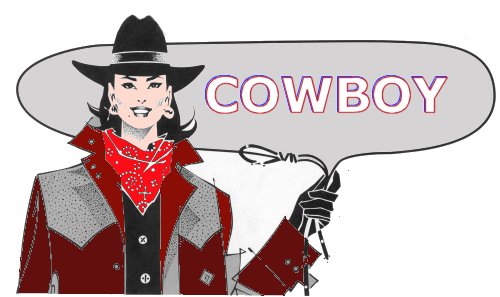 |
Phase II
lasted from Cowboy's February 1979 opening of
till the film debut in June
1980. Sixteen months. The surprising success of
Cowboy, Houston's first upscale western club,
is what caused all the Discos to disappear. Once
Houston club owners saw the experiment pay off in a big way,
they moved to copy the Cowboy format lest they
be left behind when the movie hit the screens. During
this time, two dozen Houston Discos
closed and reopened a month or so later as a Western club.
Prior to Urban Cowboy, Western dancing had never been popular inside
Houston city limits. You want to kicker dance?
Go to Pasadena. Or go to some fringe joint on the edge
of Houston. Then one day the Dancing Cowboy came
to town. After the success of Cowboy had opened eyes, Travolta's
presence during the filming galvanized the startling Disco-to-Western
Transformation.
Now that Cowboy and Travolta had erased Disco from the map, Western dance became the
only game in town. Now it was just a question of
waiting for the movie to finally hit the silver screen.
|
This Phase II period
witnessed a year's worth
of anticipation about 'Western Dancing' before the movie was
even released. One TV anchorwoman after
another boldly asserted, "This movie is a dance
sequel to Saturday Night Fever. I am certain
John Travolta is going to bring western dancing to Houston
in a big way!"
Actually Western dancing
was already here, but it was tepid. Only the Aggies
were having any fun. Since the city
boys had no idea how to Western dance, they were forced to
watch. I know it sounds absurd, but for an entire year, the
Aggies had every floor
in Houston pretty much to themselves. Nevertheless interest was
building during this time. With Travolta featured nightly on local news
channels, the expectation was set for Houston citizens to
embrace Western dancing in a big way once the movie finally
appeared in June 1980.
|
Now here is what
is odd. The Houston Media predicted the dancing would
improve thanks to the Dancing Cowboy. And yes it did,
the
dancing definitely did improve, but it improved Before
the movie appeared, not After.
That, my friends, is weird. Trends are supposed to
follow the movie.
For example,
prior to the movie Risky Business, sales of
iconic Wayfarer sunglasses were so low Ray-Ban was about to
discontinue the line. That was before Tom Cruise said,
"Sometimes you just gotta to say 'What the F...!'" as
he donned his sunglasses. Ray Ban sales shot up 50%.
That is how it is supposed to work. Fads and Trends
are supposed to come After a hit movie
appears.
Be that as it
may, during the year Before the Urban
Cowboy debut, thanks to the strange combination of
John Travolta, Cowboy, and the Texas Aggies, the Old Style of
Western dancing was replaced by the New Style of Western
dancing. This was a good thing, but it also backfired in a
truly bizarre way. Following the release of Urban Cowboy,
the Aggie Joyride was instantly extinguished. Can anyone guess
why??
|
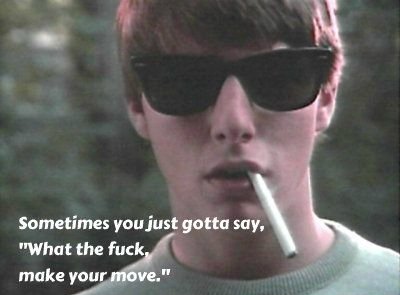 |

SUBCHAPTER 840 - THE
URBAN COWBOY MOVIE DEBUT
|
 |
June 5, 1980.
Oh my God, here it is, the Big Debut is finally here!!
For an entire
year Houston had been
bombarded with breathless promises that
Western dancing was THE NEXT BIG THING.
Indeed, during Phase II these confident
promises had turned into a self-fulfilling prophecy.
With a year to kill prior to the Debut, thanks to the Aggies, the Western dancing
had already improved dramatically. In fact, it had
improved so much that the nightly dancing at Cowboy
was now SUPERIOR to the dancing at Gilley's
as seen in the movie. How weird is that?
From my perspective, everything about Urban Cowboy
was weird. And things were about to get more weird.
During Phase II,
Houston pretty much resisted the siren call to participate
in the dancing. Most people stayed on the
sidelines due to the lack of western teachers. For the
five months of 1980 leading up to the Debut, my western
classes were pretty much the only game in town. There
may have been Western classes in other
parts of Houston in the first half on 1980, but I never
heard a word about a single competitor. Without
teachers, there was nowhere to learn. Except for
students taking my classes and of course the Aggies, most people decided to wait
for the Debut. That is when they would make their
move.
|
Here is
where things get interesting. I don't know this for
sure, but instinct tells me that somewhere around this
time a rumor started that Country-Western dancing was not
difficult to learn. In fact, the rumor was true.
Old-Style Country-Western where women danced backwards all
night long was a piece of cake. Reassured they could
pick it up in no time at all, most people decided there was
no hurry. However,
there was a catch to the rumor no one knew about.
Unaware of the impending disaster, the grasshoppers played their fiddles and bided
their time.
While the ants prepared in my classes, the grasshoppers would get to the dancing when the time
was right.
The Premiere of
Urban Cowboy was the moment we had all
been waiting for. The only way to comprehend the
Houston Zeitgeist is to grasp the utter magnitude of Urban Cowboy coming to Houston. This was no
ordinary event, this was celestial. Every important
Houston celebrity came out for the occasion. But wait,
there was more!
Celebrities from all over the country
came flying in for the event. Hollywood was well
represented with moguls like Barry Diller and Irving Azoff.
New York showed up as well. I guess
things had been a bit slow at Studio 54 lately.
Considered the epicenter of the Disco Scene, New York's Studio 54 was home to
the best and beautiful. Momentarily distracted
from the throbbing Disco pulse,
several 54 regulars took time to make the scene in
Houston... Andy Warhol, Diane von Furstenberg, Jerry Hall, and more.
Oh my God,
the most important people in the WORLD are paying attention to Houston!
|
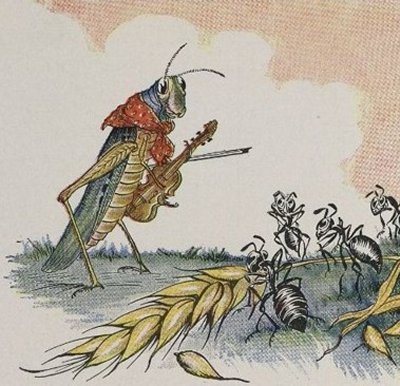 |
So how did
ordinary citizens handle all this fuss? Not very well. In my opinion,
we behaved like pre-programmed lemmings. In one grand
surge, all those people who had been waiting waiting waiting
rushed to Houston's country-western dance floors. The
dance clubs had been waiting too. They had been
hanging around at half capacity for an entire year just for
this moment. Now their patience was finally being rewarded.
This is what Disco had died for, Houston's big
Country-Western Payday.
Texas Pride.
Houston Pride. Civic Duty. For an
entire year, the
endless hoopla surrounding the
movie had challenged every person in Houston to get out on
the Western dance floor. Now all these celebrities had
arrived in Houston to reinforce the same message... 'Hey,
Houston! Get out there and show us what you've got!'
I guess it all
went to our heads. Noting this
weird 'Dance Sequel' had portrayed Houston as some sort of
Country-Western Dance Capital, you know, 'Saturday
Night Fever, Texas-style', we all felt it was our
duty to get out there and dance. In a flash, with the
national media watching, Houston
was hit with Country-Western Fever!
Only one
problem. To the supreme embarrassment of all the good
people of Houston, we suddenly discovered none of us knew
what we were doing. You
think I'm kidding, but I'm not. There were only two
groups of people who could western dance... the A&M
graduates and a smattering of blue collar people who had
moved from the country to Houston in search of jobs.
However, the blue collar arrivals avoided the upscale kicker
clubs, preferring to stick to rough and ready places like the Winchester Club. So
that left the Aggies as the only people living on the fancy
west side of Houston who knew how to dance. And were they
happy? No!! And why not? Because this
giant surge of humanity had utterly ruined their playgrounds
just as they were about to show off.
|
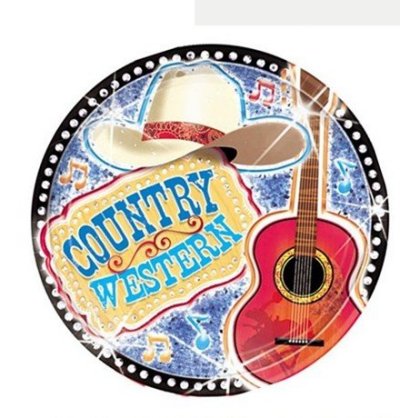 |
SUBCHAPTER 841 - COSMIC
JOKE NUMBER ONE
|
Following the Debut,
Houston's upscale western clubs saw their dance floors mobbed with a legion of new dancers who had no
idea what they were doing. In the process, these
newcomers ruined everything for the small contingent of
people who actually could dance. The Aggies watched in
horror as their playgrounds were sabotaged by a
bunch of idiots. The Aggies were not pleased, not pleased at
all.
The dance floors
were packed wall to wall. Everyone was so
confused and the floor was so crowded that no one could
move. The fact that everyone was forced to dance in
place probably saved lives. Otherwise all the bad
dancers might have killed someone. People shuffled around the floor at inches
per minute. Houston was famous for clogging freeways
whenever a hurricane threatened, but Hurricane
Country-Western was
even worse. The floor was total gridlock. And
now people were getting frustrated. And angry.
There were collisions. There were arguments.
There were insults and ugly words. All I could do was
shake my head in wonderment.
"Oh my God,"
I thought, "the dance floor has become a War Zone!"
The whole thing
was preposterous. Here we had a movie that told the
world our
Houston area was this amazing Western dance paradise, but in reality nobody knew
a damn thing. The funny part is that this situation
was totally unanticipated. Aided and abetted by gushing TV
personalities paid to plug Urban Cowboy
at every turn, Hollywood had played a giant practical joke
on our hometown. Everyone thought lots of people knew
how to Western dance, but nothing could be further from the
truth. This was the moment people realized for the
first time that Houston had zero Western dance tradition to speak
of. Thanks to all the John Travolta hype, Houston
citizens
had been conned into thinking we deserved credit for something
we had no business receiving applause. That was Cosmic
Joke Number One.
|
 |
This is just
speculation on my part, but my guess is that maybe 2% of
Houston's population had ever danced Western in their life.
In fact, that might be an overstatement. We lived
in the city. There was at best little interest in western dancing.
Because there was no interest, there were no western dance
teachers. There were no western dance studios.
High school dances played Disco music and Motown. Houston singles went Disco
dancing. It wasn't like there was any dislike of
Western dancing, but rather us city slickers had no idea Western dancing
even existed! And now this Western Storm had
hit our hometown and we were totally unprepared.
With all these
rookies Two Stepping without a license, my friends asked me why hadn't this gridlock happened before the movie came out.
I replied that people had been visiting the Western clubs
all along during Phase II, but they had the sense not to get there because they
didn't know what they were doing. So they wisely sipped their beers
at the bar and watched the Aggies show them how it was done.
However, once the movie arrived,
it was time for Phase III... Get out there and
dance!
Stimulus-Response kicked in. The pre-programmed
lemmings jumped off the cliff and entered the dance floor
even though they were clueless. Urban Cowboy
had just promised America that Western dancing was wildly
popular in Houston, so Civic Duty demanded we prove it.
The hype, the hoopla, the fuss was so great that everyone
felt an urgency to get out there and try despite their
queasy misgivings. After all, didn't the rumor say it
wasn't that tough?
Everyone was
certain of one thing... we were all supposed to go a Western
club and hang out to show our Texas Pride. Every dance
floor in the city was mobbed with people who did not know what they
were doing. The problem was not exclusive to Cowboy.
All the upscale clubs had the same problem. Overnight
the floors turned into Bumper Car Calamity. This
resulted in a mob of unruly people who pushed, tripped,
stumbled, fell, lost their temper, and behaved rudely.
There was so much animosity released by the collisions that
it threatened to destroy the fun of Western dancing, the
very thing we were supposed to be celebrating. No one
could have ever have imagined this.
As my friend Bob
Job put it, "Urban Cowboy just became a
synonym for Urban Chaos."
|
SUBCHAPTER 842 - COSMIC
JOKE NUMBER TWO
|
The Aggies were
furious and with good reason. At the exact moment they
expected to get recognition for their dancing, all these
stupid city slickers showed up to rain on their parade.
It was the very definition of Irony. For the first time ever, Country
completely dominated here in
Houston, but all these rookies were in
their way. Instead of racing around the dance floor to
the strains of Devil
Went Down to Georgia, these hotshot Aggie dancers were
reduced to a frustrating crawl. They immediately blamed the influx of Disco
dancers for the problem. However they were wrong.
It wasn't the Disco people rushing to the floors who caused
the problem. The Disco people were a small minority.
The problem was caused by the mass migration to the western
clubs by countless people who had never danced before.
So who were all
these people clogging up the floors? Now that was a
very interesting question. I had
always wondered why the Houston Rodeo was such a big hit.
After all, the people who ran in the circles I occupied could care less.
During Phrase III, I got my answer. I had just
discovered a different type of 'Urban'
Cowboy. To keep things simple, let's call them
'Suburban Cowboys'. These were not the blue collar cowboys
of the movie,
these were white collar cowboys. I learned for the
first time that
many Houston professionals identified strongly with the Country
image and
lifestyle.
They liked the music, they liked the
Rodeo, they drove a pickup truck, they wore a cowboy hat,
they liked Westerns, John Wayne was their hero, they owned a
gun, they liked to hunt, they talked Texan, and they wore
cowboy boots. However, they couldn't dance a lick because they were raised
in the city! Just because
a Houston man wore boots and listened to Country music
didn't mean he could dance to it.
|
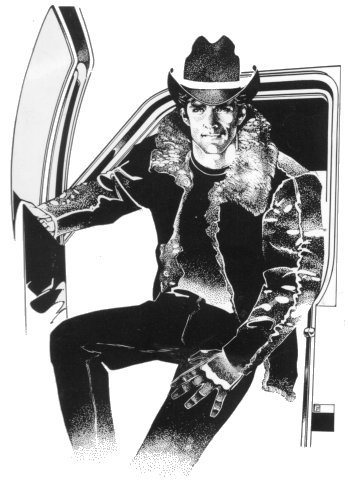 |
 |
When the movie
hit, I would guess two-thirds of the people on the dance
floors were dancing Western for the first time
in their lives. That included a lot of people who
drove pickup trucks with their radio dial set to KIKK-FM.
These non-dancing Suburban Cowboys were in for a mean
surprise. During Phase II, every day for a year Houston's Bubba population
had driven to
work listening to a radio DJ promising that Urban Cowboy
would do the same thing for Kicker Dancing that Saturday Night Fever
did for Disco.
Over time, the
subliminal message did the trick. Kicker Nation was
hypnotized into the belief that Western Dancing was in their
future. Due to all the hype, the movie created
pressure on every cowboy inside Houston's city limits to
dance for the very first time.
The mass
migration to the dance floor spelled disaster for many.
This is when Cosmic Joke Number Two kicked in. These
Western Dance virgins were in for a very rude surprise. They had been
led to believe that Kicker dancing was easy.
Uh, sorry, guys,
you're a year late. In the good old days, country
dance could be learned
on the fly. However the
Old Style had disappeared in the Upscale Clubs over the past
year thanks to the Aggies. Welcome to Phase III.
If you want to stick around, you had better learn the
trickier New Style.
Without dance
teachers, the entire city was pretty much forced to figure
out the dancing on their own or bite the bullet and take
dance lessons. Well, tough luck, Houston, but good
luck for me. As one would imagine, I was swamped with
students. This fortuitous development is the reason my
dance studio became famous overnight.
That said, the
vast majority of people tried to figure out the dancing on
their own. And of course they stumbled. This is
when the chaos ensued. Angry at the
slowpokes who didn't know what they were doing, the hotshots
lashed out by 'accidentally' pushing people in the
back or bumping into them. Others would holler "Get
out of my way!"
Take a guess how the
newcomers felt about the browbeating. Tired of getting pushed
around and frustrated with their lack of knowledge, the newcomer's tempers were boiling. The
crowded conditions made for inevitable collisions and everyone
was getting tense. There were lots of angry voices,
threats, insults, ruffled feathers and wounded feelings.
Only a few actual fists were
thrown, but there were a lot of close calls. Fortunately there were women around to bring
the hot heads back to their senses.
So that leaves
us with one last unanswered question. Why jump off the
cliff when you know you are sure to die??
|
SUBCHAPTER 843 - SURVIVAL
OF THE FITTEST
|
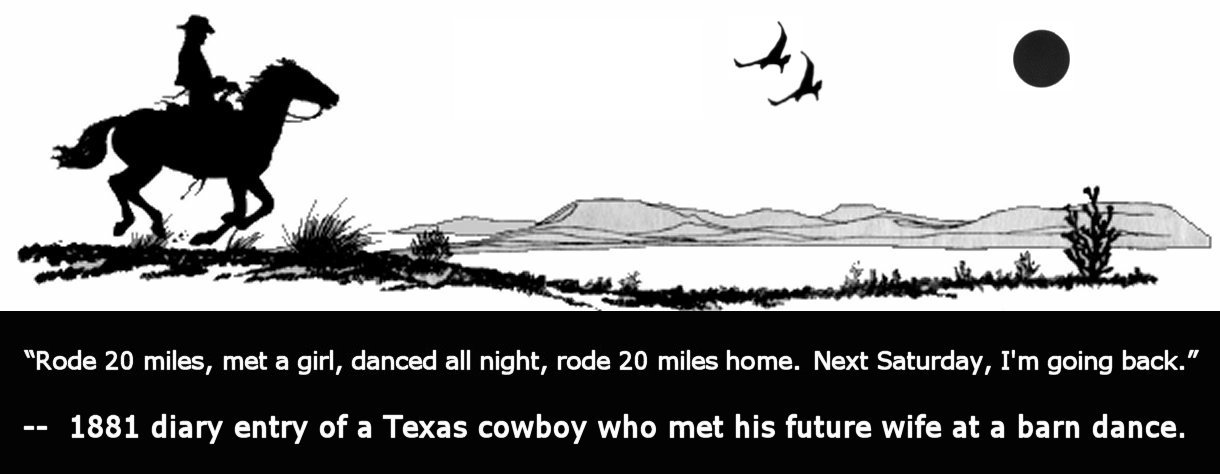
Back in the days of cattle roaming the vast Texas prairie,
Country Dancing originated as a way for lonely
cowboys to meet women at Saturday night Barn Dances.
However, this dance tradition never made it to Houston.
Available women were no longer 20 miles away, they were
right next door. Once men found they could meet girls in local bars,
churches, down the street, on the job, etc, they skipped the dancing altogether.
Dancing was no longer necessary as a courtship
device, so it largely disappeared in the Big City.
Trust me, if
given a choice between riding a mechanical bull or learning
to Twostep to prove they were a Real Cowboy, these modern
cowboys would
have opted for the bull every time. It's one thing to bust
a rib. That is 'manly'. It is another thing entirely to have
one's pride
wounded after stumbling through a Twostep with a girlfriend trying
her best not to burst out laughing or screaming over missing
toes. Few men can learn to partner dance without training of some
sort. Women have the luxury of Following, but most men
need someone to
explain it to him. Without teachers, who was going to show
the average guy
what to do? Most of these guys were trying to learn by
trial and error and not getting very far.
So that brings
us to our final question. Over the past year prior to
the Debut of Urban Cowboy, non-dancing
cowboys had visited the upscale bars. Each time
they had the sense to stay glued to their chairs rather
than display their inadequacy. Following the Debut
of Urban Cowboy, now the cowboys
reluctantly agreed to try. What changed their
minds? Why would these guys
try to dance if they did not know what to do?
|
 |
Where did
this sudden bravado come from?
Here is my
theory. The Texas Aggies and Urban Cowboy
had given women so much power that the rules of the game had
changed. Pretty much for
the entire Twentieth Century, Houston men had gotten a free
pass when they uttered the usual 'I don't know how'
excuse. Urban Cowboy emboldened
Houston women to demand their men to take them to a Western
Club. Eager to please, unsuspecting men escorted their
ladies to the nearest Upscale Kicker Club. Now they were
trapped. To their dismay, once they were on
the premises, their girlfriends and their sneaky buddies expected
them to try the dancing.
I am convinced countless young men were being
bullied by their women into hitting the dance floor for the
first time in their lives. The girls would not take no
for an answer because the movie had made country dancing cool. I had
long believed the three most powerful forces of nature were
Gravity, Nuclear Energy, and Gossip. Now I had just
discovered a fourth power: Female Persuasion. Frustrated,
ordinarily the cowboys would take one look and say forget
it. But these were not ordinary times.
Men began to approach the floor despite reservations. Why?
Ignorance, Beer, and Women with promises.
|
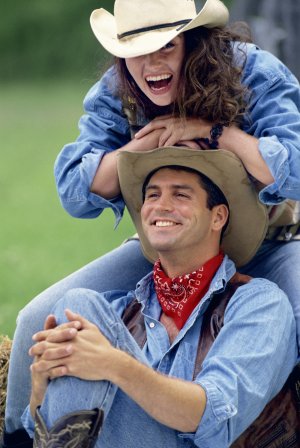 |
 |
The Ignorance
helped because anyone could see this slowpoke style of
dancing didn't look too tough. The Beer helped because
it gave men false confidence. But the real reason the
men got out there was Female Persuasion, an irresistible
force. Women love to dance and they intuitively sensed
the time had come to speak up.
Now that Western dancing had become the new Merit Badge of
being Texan, the ladies had more leverage than any other
time in Texas history. Any man who refused to try the
Texas Twostep was branded a coward and instantly stripped of
his dignity.
But even more
important, Country Dancing had emerged as a Big City courtship
ritual for the very first time ever. The pretty girls
knew for a fact that a Cowboy would do ANYTHING for love,
even if meant trying to dance for the first time in his
life. That realization included 'Suburban Cowboys'.
First the cowgirls got their men liquored up.
Smart move. Men will face a gunfight if they get drunk
enough. Then came the sweet talk. Let me tell
you, a pretty girl with a wink and a promising smile is
tough to resist.
"Ah,
c'mon, Luke, I want you to put your arms around me and
stop being such a sissy. Yew can do it; it ain't that hard! Just look at all those other guys
out there. If they can do it, I bet yew can do it
too. Come on, honey, don't be so stubborn.
Just git out there with me. Don't worry, I'll help you figure it out!"
|
A lot of these
guys were fooled by how easy it looked. And you know
what? It really was easy! I imagine these
newcomers would have done just fine if the Old Style had
been in effect.
After all, Texas cowboys had been pushing their women
backwards for 100 years. How much skill does it take
to push a girl backwards for an entire song? What was any different
now? Well, that was the problem. Things were
different all because those damn Aggies had upped the ante.
'Step-touch Step touch Walk
Walk' was a thing of the past. Today's men were
expected to do previously unthinkable things like dance
backwards. Oh my God, let women go forward?
Whose idea was that? Nor did it stop there.
Men were expected to learn difficult Circle Turns. Too
late to turn back now. Men walked the plank. It was sink or swim. Many
of them sank. Chagrined, a lot of them recognized what they were up against and
made a pilgrimage to my dance studio.
The problem was
that Darwinian Principles had kicked in. Country
Dancing was no longer an afterthought, here in Houston it
had become a method to find a girlfriend, or, in some cases,
keep a girlfriend. It was no
longer okay to just to get out there. To survive in
this modern environment, now a guy
had to know what he was doing. There was actual
competition on the dance floor to see which guys were the
best dancers. The unattached gals wielded tremendous
power. With all these guys to choose from, skill
counted. The men who knew how to dance got the girls, the men
who didn't know were left to cry in their beer.
Sometimes life can be very unfair.
This competition
led to Phase IV: Dance Wars! It was no longer
just Country versus Disco. Now it was Dancers
versus Non-Dancers. The collision of two worlds had turned Houston's
dance floors into a War Zone. This set the stage for a
major showdown.
The tension between the Cowboys and the
Discos was about to hit the most sensitive topic of all...
Western Dance Ability! Let the best man win.
|
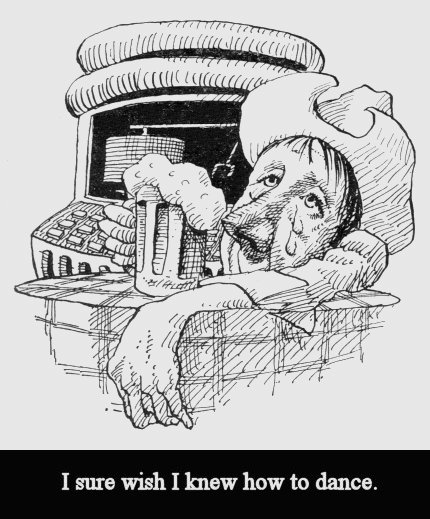 |
MAGIC CARPET RIDE,
PART TWO
Chapter
ONE HUNDRED NINETY THREE:
MAD
SCIENTIST
|
|
|